Selecting the right ham (bone-in, good fat content, artisanal/local) is key for a juicy BBQ ham recipe using low and slow cooking like smoking or braising. Dry brine for flavor and tenderness. Maintain 200-250°F (93-121°C) on grill, cook 1-2 hours per pound at 200-225°F (93-107°C), check internal temp at 145°F (63°C). Rest ham before slicing. Regularly baste for moisture retention.
Unleash the mouthwatering aroma of a perfect BBQ ham with our guide to the low and slow cooking method. Discover how this technique transforms a simple ham into a juicy, tender delight. From selecting the ideal cut to mastering timing, we’ll walk you through each step. Learn about dry brining for enhanced flavor, setting up your BBQ for low-temperature cooking, and techniques to ensure moisture throughout the slow-cooking process. Elevate your BBQ game with this time-tested ham recipe!
- Selecting the Perfect Ham for Low and Slow Cooking
- The Art of Dry Brining for Maximum Flavor
- Setting Up Your BBQ for Low Temperature Cooking
- Techniques to Maintain Moisture During Slow Cooking
- Mastering the Timing for a Juicy, Tender Ham
Selecting the Perfect Ham for Low and Slow Cooking
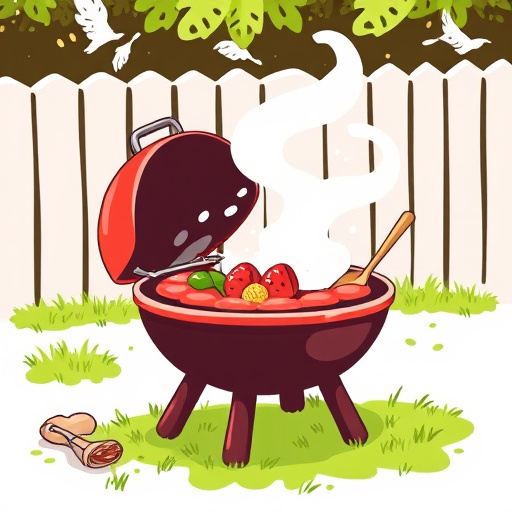
When it comes to low and slow cooking methods, such as smoking or braising, selecting the right cut of ham is key to achieving juicy, tender results in your BBQ ham recipe. Opt for a bone-in ham with a good layer of fat, like a whole leg ham or a shoulder ham with a skin on. These cuts hold moisture better and have more flavor due to their rich marbling. Avoid pre-sliced hams, as they tend to dry out faster during slow cooking.
Consider the quality of the ham, too. Look for a ham that’s been properly cured and aged, which will ensure a deep, savory flavor. Artisanal or locally sourced hams are often better choices since they’re typically crafted with care and higher-quality ingredients. Remember, the better the ham, the more satisfying the final dish—a juicy, flavorful BBQ ham that’ll be the star of your meal.
The Art of Dry Brining for Maximum Flavor
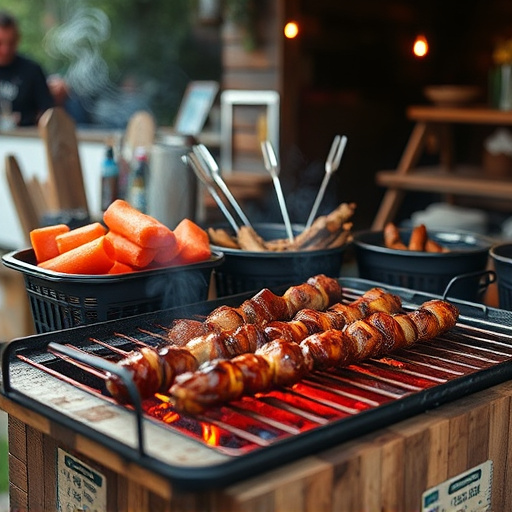
The art of dry brining is a secret weapon for achieving incredibly juicy, flavorful BBQ ham recipes. By simply rubbing salt onto the ham’s surface and leaving it to sit for several days, you’re allowing the salt to draw out moisture from the meat. This process not only enhances the overall taste but also helps to break down connective tissues, making the ham tender and melt-in-your-mouth.
During dry brining, the salt acts as a preservative, creating an environment that inhibits bacteria growth. This allows for longer cooking times at lower temperatures without risk of spoilage. The result is a ham that’s packed with flavor, with a crispy exterior and succulent interior—the perfect centerpiece for any BBQ gathering.
Setting Up Your BBQ for Low Temperature Cooking
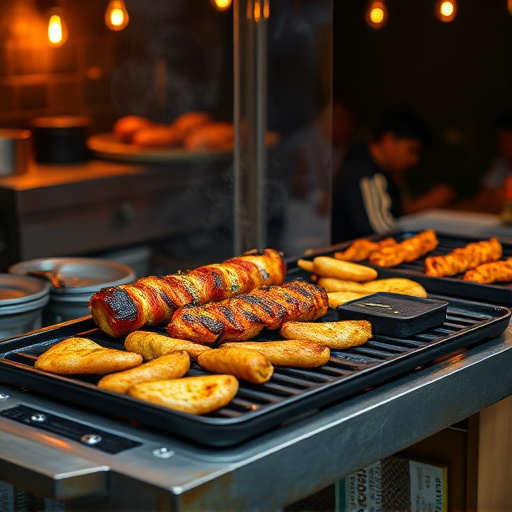
To master the art of slow-cooking a juicy ham on your BBQ, preparation is key. First, ensure your BBQ is set up for indirect heat cooking. This typically involves moving coals to one side of the grill and placing a cast iron skillet or similar container filled with water on the other side. The water acts as a steam source, creating a moist environment essential for tender ham.
Adjust your grill temperature to between 200-250°F (93-121°C). This low temperature is crucial for slow-cooking meat, allowing it to break down gradually and ensuring a juicy finish. Once set up, place your ham on the grill, fat side up, and let the magic unfold as you enjoy the fragrant aroma wafting from your BBQ.
Techniques to Maintain Moisture During Slow Cooking
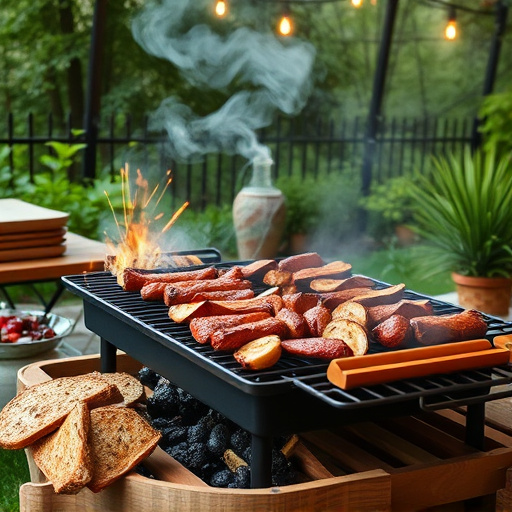
Maintaining moisture is key to achieving juicy, tender ham when using a low and slow cooking method. One effective technique is to use a dry rub—a blend of spices rubbed directly onto the meat before cooking. This not only adds flavor but also helps seal in juices. Using a generous amount of fat, like butter or oil, during the initial searing process can also prevent dryness.
Additionally, slow cooking ham in a covered pot allows steam to build up and rehydrate the meat from within. Regularly basting with a combination of ingredients such as apple juice, vinegar, or even beer can further enhance moisture retention. These techniques ensure that your bbq ham recipe stays deliciously moist throughout the slow-cooking process.
Mastering the Timing for a Juicy, Tender Ham
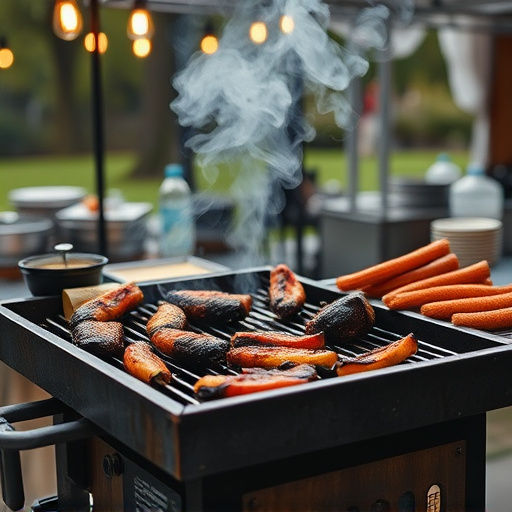
Mastering the timing is key to achieving a juicy and tender ham in the low and slow cooking method. This technique requires patience, as it involves cooking the ham at a consistent low temperature for an extended period. The exact time will vary depending on the size of your ham and your desired level of doneness, but typically, you’re looking at 1 to 2 hours per pound at temperatures between 200-225°F (93-107°C).
For a BBQ ham recipe, this means setting up your smoker or oven with the ideal temperature and letting the ham cook gently. Regularly checking the internal temperature with a meat thermometer is crucial; aim for 145°F (63°C) for a medium-rare ham, allowing it to rest before slicing to ensure those juicy flavors set in.
